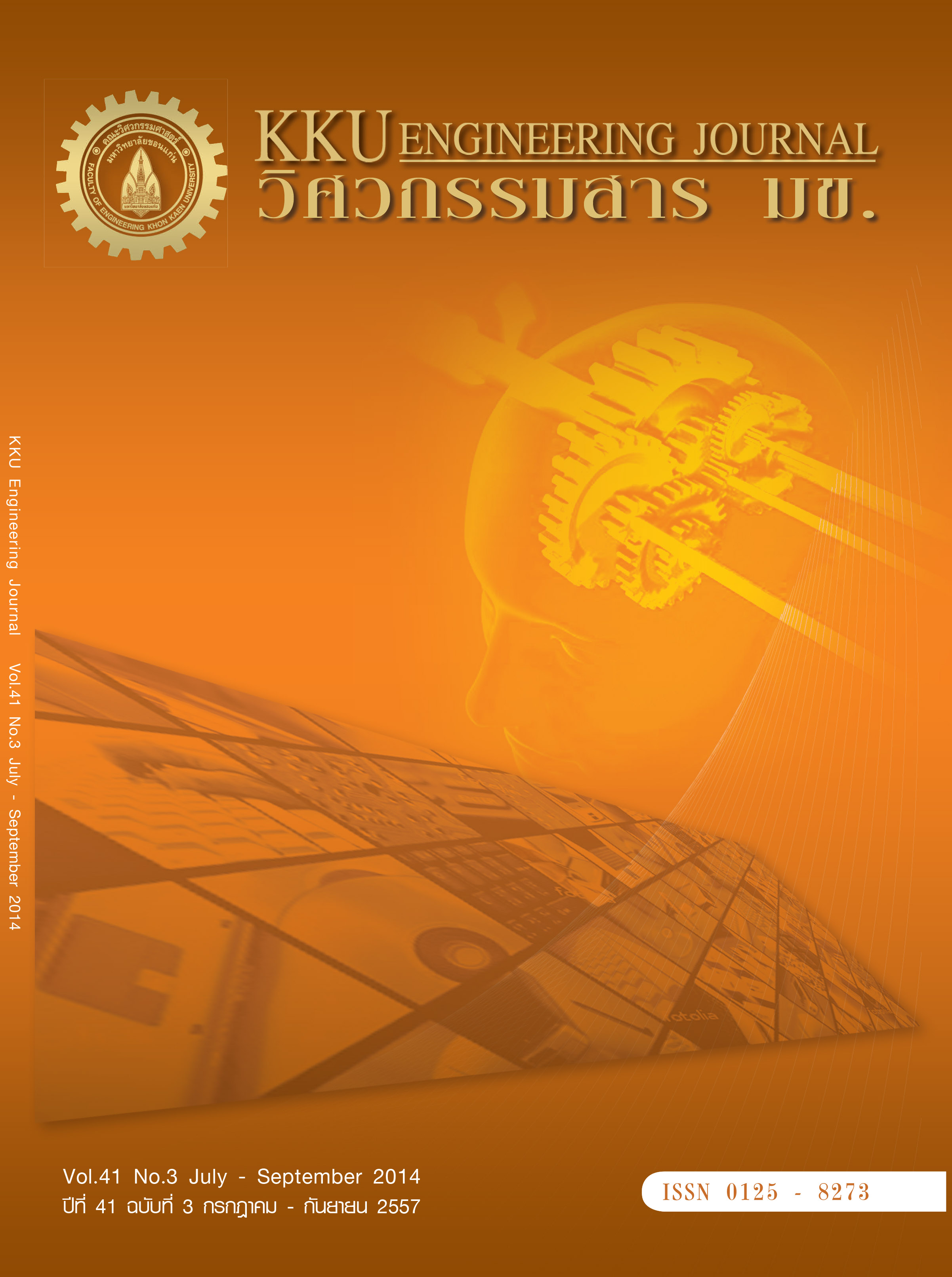The efficiency of different types of wood charcoal on increasing carbon content on surfaces of low carbon steel in the pack carburizing process
Main Article Content
Abstract
The purpose of this research is to compare the efficiency of five types of wood charcoal, eucalyptus, coconut
shell, tamarind, bamboo and cassava root in increasing carbon content on surfaces of low carbon steel by
the pack carburizing process. The experiment for pack carburized low carbon steel (grade AISI 1020) was
conducted by using the different wood charcoals as carburizers, mixed with 10% limestone (by weight) as
the energizer. The carburizing temperature of 950°C, and carburizing times of 2, 4 and 6 hours were used in
the experiment. After grinding, the specimens in each case were checked for carbon content by optical
emission spectroscopy. Micro-Vickers hardness testing and microstructure inspections were carried out. The results of the experiment showed that the efficiency of eucalyptus charcoal as the carburizer (for increasing
carbon content on surfaces of low carbon steel) was higher than that of tamarind, cassava root, coconut shell
and bamboo charcoals. The averages for carbon content were: 1.16, 1.06, 0.97, 0.83 and 0.77%
respectively.
shell, tamarind, bamboo and cassava root in increasing carbon content on surfaces of low carbon steel by
the pack carburizing process. The experiment for pack carburized low carbon steel (grade AISI 1020) was
conducted by using the different wood charcoals as carburizers, mixed with 10% limestone (by weight) as
the energizer. The carburizing temperature of 950°C, and carburizing times of 2, 4 and 6 hours were used in
the experiment. After grinding, the specimens in each case were checked for carbon content by optical
emission spectroscopy. Micro-Vickers hardness testing and microstructure inspections were carried out. The results of the experiment showed that the efficiency of eucalyptus charcoal as the carburizer (for increasing
carbon content on surfaces of low carbon steel) was higher than that of tamarind, cassava root, coconut shell
and bamboo charcoals. The averages for carbon content were: 1.16, 1.06, 0.97, 0.83 and 0.77%
respectively.
Article Details
How to Cite
Thammachot, N., Homjabok, W., & Thadee, N. (2014). The efficiency of different types of wood charcoal on increasing carbon content on surfaces of low carbon steel in the pack carburizing process. Engineering and Applied Science Research, 41(3), 381–391. retrieved from https://ph01.tci-thaijo.org/index.php/easr/article/view/22545
Issue
Section
ORIGINAL RESEARCH
This work is licensed under a Creative Commons Attribution-NonCommercial-NoDerivatives 4.0 International License.



